I've been searching for a way to make the UISlider progress bar taller, like increasing the height of the slider but couldn't find anything. I don't want to use a custom image or anything, just make it taller, so the UISlider doesn't look so thin. Is there an easy way to do this that I'm missing?
- 5,009
- 16
- 47
- 81
-
Maybe you could try by changing the scale factor ? Not sure it would work as intended. – Antzi Apr 27 '14 at 06:44
-
Would you exemplify what you mean? The scale factor of what? – Josue Espinosa Apr 27 '14 at 06:44
-
https://developer.apple.com/library/ios/documentation/graphicsimaging/reference/CGAffineTransform/Reference/reference.html – Antzi Apr 28 '14 at 04:03
5 Answers
The accepted answer will undesirably change the slider's width in some cases, like if you're using a minimumValueImage and maximumValueImage. If you only want to change the height and leave everything else alone, then use this code:
override func trackRect(forBounds bounds: CGRect) -> CGRect {
var newBounds = super.trackRect(forBounds: bounds)
newBounds.size.height = 12
return newBounds
}
- 2,118
- 2
- 21
- 17
-
4Just as an extra step, you can add `newBounds.origin.y -= 6` (or your new value divided by 2) just to be sure it's centered in Y with the new thickness value. – Fernando Mata Apr 04 '18 at 04:05
-
@FernandoMata not quite 6... need to subtract `(newHeight-originalHeight)/2` from `y` – Tim Jan 22 '19 at 19:15
Here's my recent swifty implementation, building on CularBytes's ...
open class CustomSlider : UISlider {
@IBInspectable open var trackWidth:CGFloat = 2 {
didSet {setNeedsDisplay()}
}
override open func trackRect(forBounds bounds: CGRect) -> CGRect {
let defaultBounds = super.trackRect(forBounds: bounds)
return CGRect(
x: defaultBounds.origin.x,
y: defaultBounds.origin.y + defaultBounds.size.height/2 - trackWidth/2,
width: defaultBounds.size.width,
height: trackWidth
)
}
}
Use this on a UISlider in a storyboard by setting its custom class

The IBInspectable allows you to set the height from the storyboard

- 791
- 7
- 7
For those that would like to see some working code for changing the track size.
class CustomUISlider : UISlider {
override func trackRect(forBounds bounds: CGRect) -> CGRect {
//keeps original origin and width, changes height, you get the idea
let customBounds = CGRect(origin: bounds.origin, size: CGSize(width: bounds.size.width, height: 5.0))
super.trackRect(forBounds: customBounds)
return customBounds
}
//while we are here, why not change the image here as well? (bonus material)
override func awakeFromNib() {
self.setThumbImage(UIImage(named: "customThumb"), for: .normal)
super.awakeFromNib()
}
}
Only thing left is changing the class inside the storyboard:

You can keep using your seekbar action and outlet to the object type UISlider, unless you want to add some more custom stuff to your slider.
- 5,699
- 2
- 50
- 72
- 9,924
- 8
- 76
- 101
-
1Meh. This works but it messes the alignment of the `UISlider` up quite a bit and the `setThumbImage` function doesn't work. – Michael Aug 13 '15 at 18:09
-
Please elaborate why it messes the alignment up? Are you sure setThumbImage doesn't work? I've just checked in Xcode 7.0 beta, Swift 2.0 – CularBytes Aug 13 '15 at 18:36
-
I think the origin isn't centering it vertically (like the default UISlider). I just added a top constraint to counter it. – Michael Aug 13 '15 at 18:37
-
@BrightFuture Are you sure `forBounds bounds` is swift 3? Is the complete code working on swift 3? I'm not currently into swift 3 development but just want to verify, looks odd. – CularBytes Nov 07 '16 at 15:34
-
1
I found what I was looking for. The following method just needs to be edited in a subclass.
override func trackRect(forBounds bounds: CGRect) -> CGRect {
var customBounds = super.trackRect(forBounds: bounds)
customBounds.size.height = ...
return customBounds
}
- 5,009
- 16
- 47
- 81
-
4This is good (and works), but don't forget to call bounds = [super trackRectForBounds:bounds]; or else it will change the slider frame.. – Cutetare Aug 05 '14 at 09:28
-
2@Cutetare, Why would you need to call the super `trackRectForBounds:` method if you want to pass your own bounds? – Iulian Onofrei Sep 16 '15 at 12:42
You could play with this, see what happens:
slider.transform = CGAffineTransformScale(CGAffineTransformIdentity, 1.0, 2.0);
- 1,024
- 10
- 18
-
1Because this changes the whole frame instead of just the bar like the question stated and doesn't re-adjust the corner radius or the thumb slider frames so everything looks disproportionate. – Mark Bourke May 15 '16 at 17:01